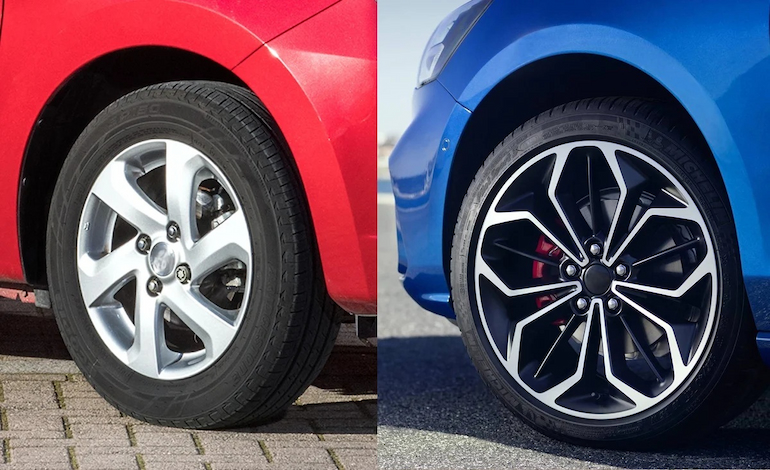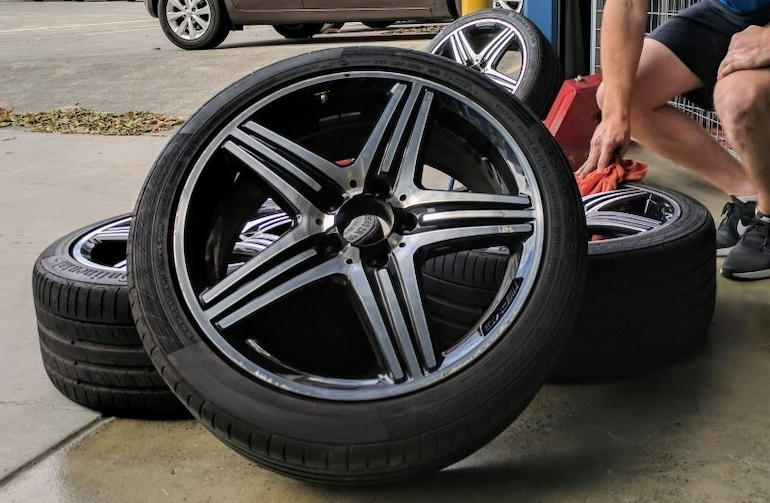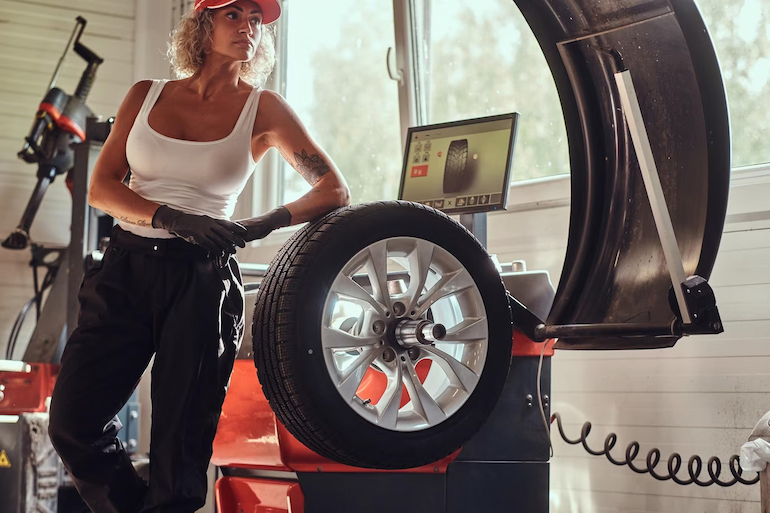There are dozens of ways to make your car faster, more responsive and more fun to drive. Wheels are the often overlooked choice when it comes to the range of performance upgrades, but deliver in more ways than one. First, bigger and wider wheels allow you to wrap them with better rubber, so you’ll be increasing grip in all road and weather conditions, and improving handling in the process. The lighter designs allow for a lower sprung mass and wheels that get the car to speed faster, but also reduce braking distances. Drivers get safety and performance in the same package but also something that’s better equipped for more abuse around the track with higher loading rates, and materials that cope with heat, corrosion as well as impact when hitting potholes or bumps at any speed.
This encompasses the performance and durability benefits of aftermarket car wheels. What drivers also get is the chance to choose the designs, sizes and colours that go best with the car. With all that’s available and at different price brackets, choosing the right set may be the hardest part. Here’s what to look for:
Alloys or Steel – Why Materials Matter

Steel wheels are options on entry-level cars and rarely you’ll see them in any trim higher up. They’re affordable simply due to the faster production methods and the unassuming designs that don’t add much to the car. That’s not to write them off. Steel wheels done right tend to be better built and more durable than lower-grade cast aluminium alloys, better at handling potholes, bumps and other road imperfections and stay relatively unscathed when curbed. However, the downsides far outweigh their low price, particularly if you’re looking for a performance upgrade. Steel is much heavier, so affects acceleration and braking, can rust, and is offered in far fewer designs than alloys.
If you want to mix function and form, then alloys are a better bet. Aluminium and magnesium alloys are the performance choices due to their much lower weight, so in line with faster cars; can incorporate trace metals to substantially increase flexibility and strength and how they handle impact and heat, and are made in processes that reduce weight while upping strength. The abundance of differing designs also aids heat dissipation in hot brake assemblies, nulls any chance of corrosion, and also helps reduce fuel use. That they look better is just the cherry on top.
How They’re Made

Casting, flow-forming and forging are the three main processes in which wheels are made. Casting involves pouring molten metal into a mould and then machining it to get the end result. This produces wheels of decent strength, but generally heavier than other options. Flow forming is similar, with cast wheels additionally spun on a mandrel while applying heat and pressure. The process adds more strength while cutting down weight. These are considered entry-level wheels for more spirited highway driving and easier track use. If you’re looking for the last word in performance, then forged wheels go unrivalled. Forging involves forming a single solid piece of metal under immense pressure and heat, then rolling the wheel, and machining it to remove excess material. The end result is a wheel with exceptional strength, very low weight and the ability to get some interesting designs. Newer versions of forged or monobloc variants are infused with carbon for even more strength, and go by the apt name of carbon forged wheels.
Sizing
This is where things get tricky. Most upgrades go for wider and bigger wheels, allowing for grippier, low-profile tyres, filing embarrassing gaps in the wheel arches and giving the car a more grown-up look. Diameters range from 13 to 22 inches, with 17, 18 and 20-inch types being some of the more common sizes. Widths vary from 4 inches in the smallest car wheels to over 12 inches in the biggest there are. Bear in mind that whatever you choose fits the arches without the need for mods, and how this affects steering and suspension.
A few other sizing considerations catch a lot of buyers off guard, with bad results. Offset refers to the wheel’s mounting surface relative to its centreline. Zero offset sets the wheel with equal sides from the centreline; positive offset sets the mounting surface closer to the outside, and wheels with negative offset push them more toward the suspension. The majority of performance cars have positive offset and a wider track that helps with traction and cornering stability.
Bolt patterns need to match the hubs and axles, and you’ll see most car wheels with a 4 or 5-bolt pattern design, although 6-bolt patterns are also found. Spacing between the centrelines of each hole ranges between 100 and 120mm. This is for wheels that fit the car with bolts, but you’ll also see some wheels with a centre bore, particularly for racing applications, due to the added strength and higher stability.
Design Variations

The good part about getting aftermarket wheels is the huge selection of colours and designs on offer. There are wheels that go well with different vehicle types, such as those that bring out the best of Japanese or European cars, or wheels tailored specifically with a more aggressive look for off-roaders. Spoke count differs, as well as designs like tele-dial, grid or mesh types with distinctive looks. Moreover, there’s a huge colour pallet, ranging from ordinary black or grey to less orthodox gold or green and everything in between.
Brands and Pricing
There are hundreds of brands to choose from, with varying designs and wheels meant for different cars. If you’re looking to buy aftermarket wheels, consider brands with affiliations to racing teams when opting for performance variants, as these have done their research and tested wheels in real-world conditions. This will net you forged wheels with superior strength, but at a higher cost. If looks are all that matter, then you can save some cash and go with lesser brands in cast types. Just remember to choose what catches your eye and have a few spares around, just in case.

